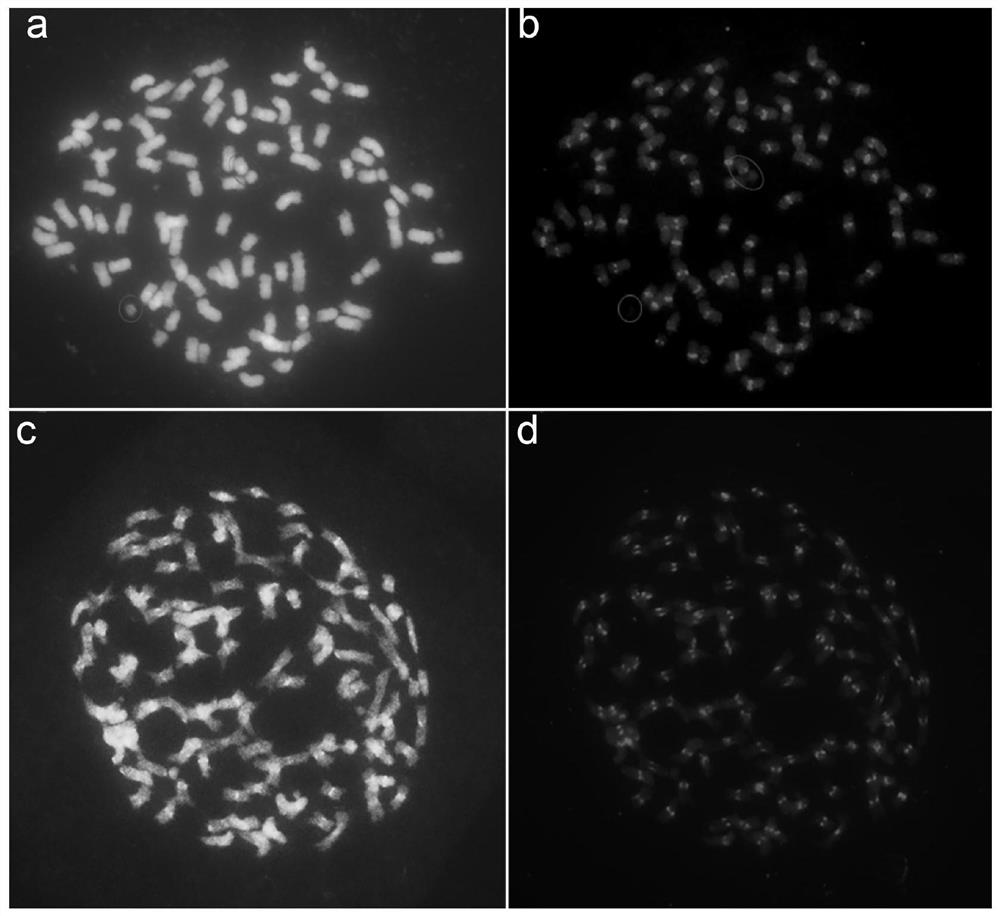A new method for accurate chromosome counting using sugarcane centromere-specific repeat sequences
A repetitive sequence and centromere technology, applied in the fields of bioinformatics and molecular cytogenetics, can solve problems such as difficulty in obtaining centromere sequences, and achieve wide application significance, reduce requirements, and be suitable for wide application
- Summary
- Abstract
- Description
- Claims
- Application Information
AI Technical Summary
Problems solved by technology
Method used
Image
Examples
Embodiment 1
[0031] Example 1: Implementation of ChIP-Seq Technology
[0032] ChIP-Seq technology refers to the method of high-throughput sequencing of DNA obtained after chromatin immunoprecipitation ChIP.
[0033] The basic process of ChIP-Seq used in the present invention is:
[0034] 1. Grind fresh and young leaves with liquid nitrogen to extract cell nuclei;
[0035] 2. Extract the nucleus, use micrococcal ribozyme to enzymatically hydrolyze the nucleus, and randomly break the chromatin into fragments smaller than 300bp;
[0036] 3. Add the antibody of centromere-specific histone CENH3, and bind to the target protein-DNA complex; divide the nuclei after enzymatic hydrolysis into three parts, one part is the internal reference (input), and one part is added to the pre-immune serum ( Mock), another CENH3-specific antibody was added to immunoprecipitate the protein-DNA complex, and inverted overnight at 4°C;
[0037] 4. Add Protein A to bind the antibody-target protein-DNA complex and...
Embodiment 2
[0050] Embodiment 2: primer design and PCR amplification
[0051] Use the primer design software Primer Premier 5.0 to design primers for the centromere sequence CENTS. The set conditions are: first, the full-length or partial sequence of the nucleic acid sequence; second, the length of the primer is 21bp±5bp; third, the GC content of the primer sequence is 40-60%; the fourth is to avoid the formation of stable dimer or hairpin structure between the primers; the fifth is that the primers cannot be mismatched at the non-target site of the template sequence.
[0052] The conditions of PCR amplification were: pre-denaturation at 95°C for 3 min; denaturation at 95°C for 45 s, annealing at 57°C for 30 s, extension at 72°C for 90 s, 30 cycles, and final extension at 72°C for 7 min.
[0053] It should be noted that the band amplified by PCR should be a single band. The PCR product can be directly purified and recovered using the QIAGEN kit, its catalog number: 28104, name: QIAquick ...
PUM
 Login to View More
Login to View More Abstract
Description
Claims
Application Information
 Login to View More
Login to View More - R&D
- Intellectual Property
- Life Sciences
- Materials
- Tech Scout
- Unparalleled Data Quality
- Higher Quality Content
- 60% Fewer Hallucinations
Browse by: Latest US Patents, China's latest patents, Technical Efficacy Thesaurus, Application Domain, Technology Topic, Popular Technical Reports.
© 2025 PatSnap. All rights reserved.Legal|Privacy policy|Modern Slavery Act Transparency Statement|Sitemap|About US| Contact US: help@patsnap.com

